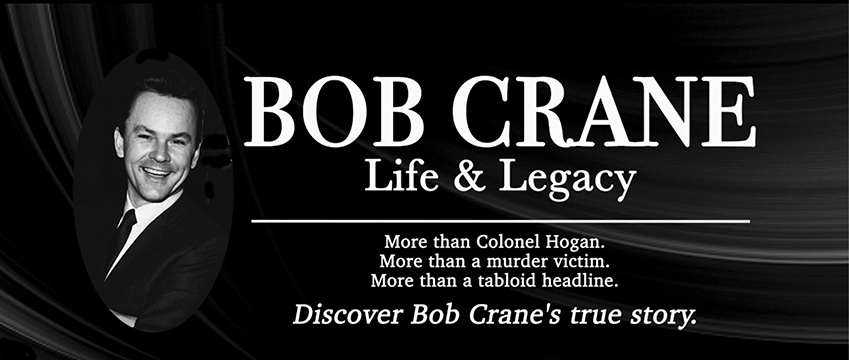In 1959, the television pilot for Picture Window was filmed, and this short film is credited as being the first television performance by Bob Crane. Created by Max Shulman (creator of The Many Loves of Dobie Gillis), Picture Window centered around the lives of young couples and families residing in what was then modern-day Suburbia. The show was never sold, and thus, it was never produced, and the pilot never aired. This clip from Picture Window shows Bob Crane as Jerry McEvoy, a young husband and father who is fretting over his wife Mildred's spending habits.
Bob Crane in Picture Window (1959)
In 1959, Bob had already been with KNX for three years. When he was hired by KNX in 1956, he had signed an agreement with CBS Radio that he would not act professionally for at least five years. According to Harry Neigher, reporter for The Sunday Herald (Bridgeport, Connecticut), CBS had granted Bob an exception to film Picture Window. Neigher reported the following on May 22, 1960:
"A flash about Bob Crane, Bridgeport's greatest gift to Hollywood: CBS Radio gave him the nod to do a pilot film for Max (Dobie Gillis) Shulman "Picture Window" - a series about some Westport-type young married couples, but Bob isn't going thru with the idea. The "Tunnel of Love" performances Crane did last Fall turned out great, and he's doing another Valley Playhouse production this Fall, "Who Was That Lady," from the pix of the same name with Bob taking the Dean Martin role. Bob almost got the male lead in Marilyn Monroe's current movie, "Let's Make Love.," but the job finally went to an unknown named Tony Randall...CBS Radio Network is mulling a nationwide outlet for Bob's KNX show in Hollywood, which has captured the most applaudience and top rating of all the West Coast radio broadcasts. Which makes our Bob Crane the highest paid Airistocrat of California."
In addition to radio and music, Bob always had an interest in acting. While waiting for the right time to break into television, he honed his acting skills in live theatre, which he grew to love. He continued performing on stage from the 1950s through the 1970s until his death in 1978. In 1961, as soon as his no-acting clause expired, Bob accepted the role as Harry Rogers on The Dick Van Dyke Show. And the rest, as they say, is history!
